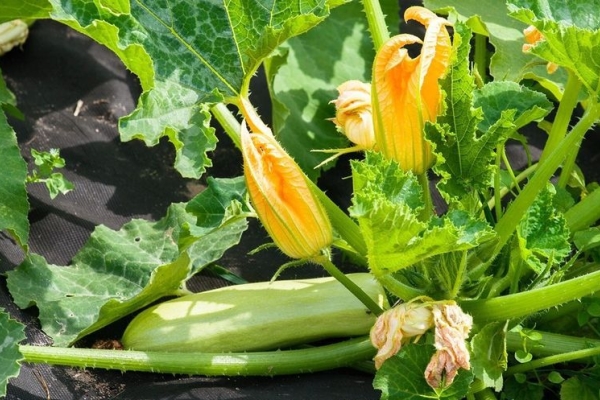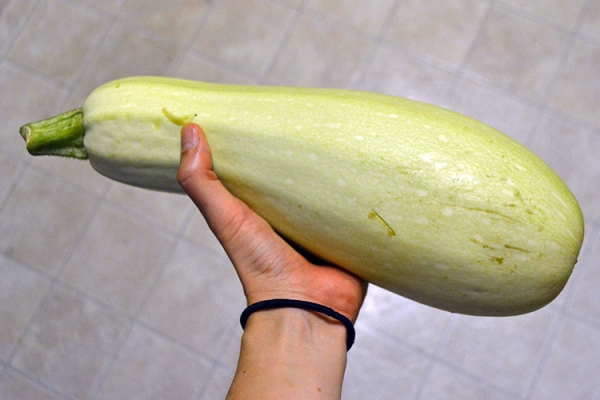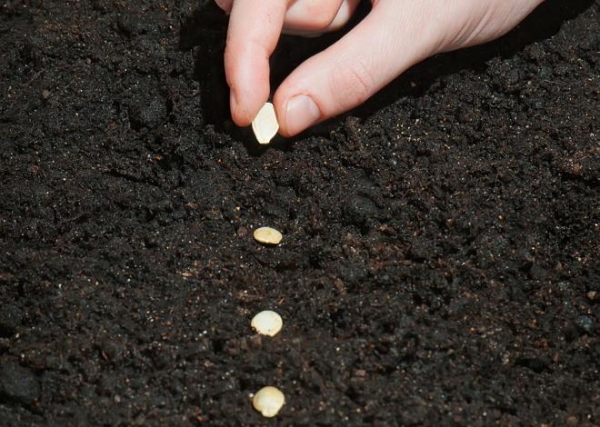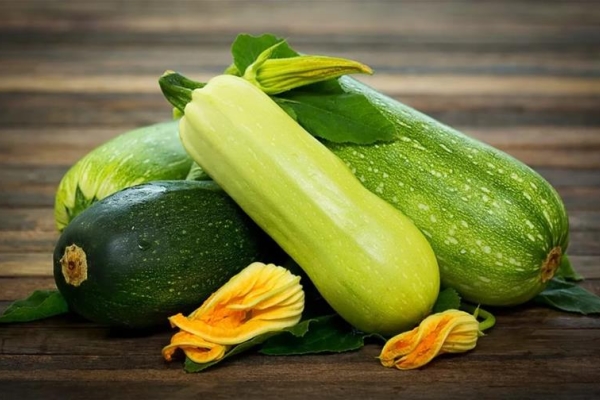Zucchini is a very popular vegetable in our country, it is grown on almost every summer cottage. It belongs to the pumpkin family, and has an italian brother - zucchini. Although they are similar in their external qualities, the difference between them is still there. Let's find out how they differ from each other?
Table of contents
Is there a difference and how are they different?
You can distinguish zucchini from zucchini by some factors:
External characteristics
The first has a light green, hard skin and grows on a large sweeping bush, forming long shoots with small leaves and flowers.
His Italian brother has a dark green color.. The rind is soft and tender to the taste. The bush is compact, the leaves are large and painted in a rich color.

Fruit size
Zucchini, with proper care, can reach up to 40 cm in size, and zucchini, only up to 25 cm.
Tastes and useful properties
Pulp in zucchini harsh, used only for cooking stewed and fried foods, contains sugar, protein, potassium, starch, pectin, phosphorus, iron and folic acid.
At the zucchini the flesh is soft and soft, with a pleasant taste and aroma. Young zucchini can be eaten raw. Zucchini contain a large amount of vitamins: B, C, PP
Growing conditions
Zucchini unpretentious care, for good growth, the vegetable can be planted in partial shade, but only in nutritious soil.
His brother is more picky. to climatic conditions. If all requirements are met, the Italian brother matures much faster than his relative.

Storage
If zucchini is not damaged, then they can be stored for a long time, in a cold and dark place. Zucchini for long-term storage are not subject.
Calorie content
Zucchini - a dietary product, the number of calories is 15%, in zucchini - 30.
Zucchini features
Zucchini is the closest relative of the pumpkin and zucchini. Mexico is considered the motherland, but the Italians discovered the taste of this vegetable.
The vegetable grows on a miniature bush and has a dark green, yellow, or openwork color of the fruit.
Vegetable - early, from the bush you can get from 15 to 20 fruits. The bush is constantly fruiting, has a tender flesh with a minimum amount of seeds. The peel is soft and soft, as a result, it can be eaten raw.
The plant prefers a lot of heat and moisture, with minor frosts may die.
Fast in preparation, for full readiness, it takes only a few minutes; if you overdo it, the vegetable hardens and loses its taste qualities.
The benefits of vegetables are great: it promotes the rapid removal of bile, has a diuretic effect, improves the digestive process, improves the blood, removes "bad" cholesterol, decoction of flowers facilitates allergic reactions.
Fruits can not be used in violation of the output of potassium from the body and with individual intolerance.

Zucchini features
Squash is a creeping plant that forms a large shrub with long shoots. Fruits are light green or light yellow in color, reach a length of 40 centimeters or more.
In their raw form, they are not consumed due to their hard skin.. In a mature vegetable seeds are large, which must be removed before cooking.
From one bush can collect up to 9 fruits. Technical ripeness begins in early fall. If you do not harvest in time, the fruits lose their taste, grow to enormous size and become hard and dry.
The plant is unpretentious care, not afraid of frost and temperature changes.
When growing vegetables, it is necessary to prepare enough space for growth, as the bush reaches a height of 70 cm and forms spreading whips.
The plant is often attacked by insect pests.

How to plant and grow seeds in the open field
For a rich harvest, for zucchini it is necessary to find an open sunny place, zucchini is also well adapted in partial shade.
Zucchini sprout much earlier, but in the process of growth Italian relatives catch up with them and overtake.
It is better to plant zucchini on high, prepared from autumn, fertile beds, sprinkling the seedlings with sand or earth, creating at the same time a small heating, as the plant is thermophilic.
Watering zucchini in the open ground is carried out 3-4 times a week during the formation of fruits. Zucchini love to grow in moist soil.
A big plus when growing zucchini - this is what the plant does not need weeding, since the forming long lashes create a shadow in which the weeds do not grow.

Differences in storage and transportation
When zucchini has a thick crust, they are well transported and stored in a cool and dark place for up to several months. For long-term storage, it is necessary to choose not overripe and intact fruits.
Milk brother as a whole does not keep for a long time, as a delicate vegetable has a soft skin. At room temperature, it can be saved only for 1-2 days.
So, the difference between zucchini and zucchini:
- Dark green zucchini is much smaller than a light green zucchini and grows in a bush with large leaves and flowers.
- Zucchini tolerates minor frosts and temperature fluctuations, zucchini are more fastidious to weather conditions.
- Fruit ripening is much faster with the “Italian”.
- Zucchini consumed only in fried, boiled, stewed or preserved, dairy zucchini can be eaten raw.
- Zucchini is a dietary product, the calorie content is significantly lower than that of zucchini.
